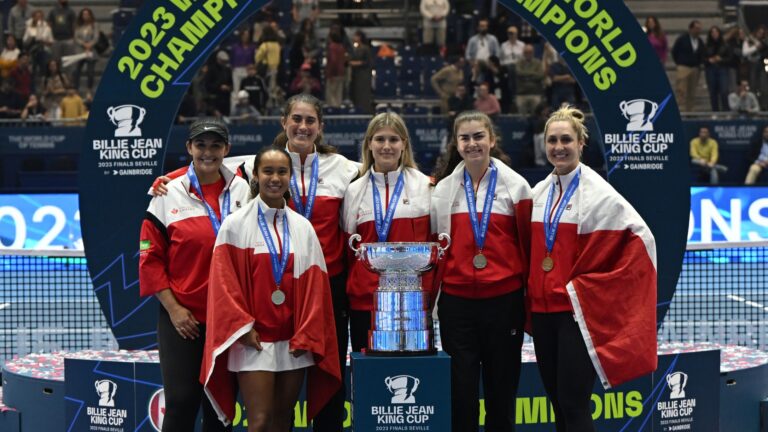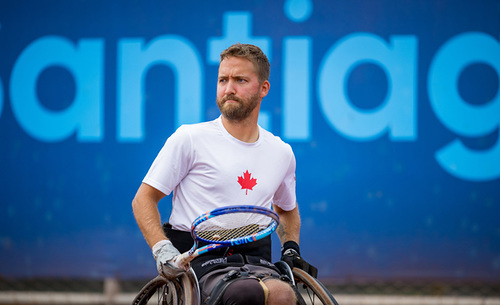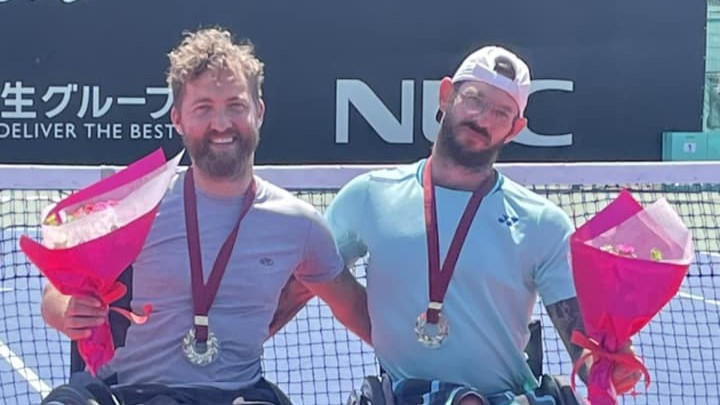
If broad generalizations may be made about tennis in different parts of the world, players from India can be described as having touch and feel, usually from positions near the net.
Some of that will be on display this weekend when India visits Edmonton to play Canada in a Davis Cup World Group Play-off.
The tradition of sophisticated Indian shot-making goes back through several generations – players such as Ramanathan and son Ramesh Krishnan, Premjit Lall, Vijay Amritraj, Leander Paes and Mahesh Bhupathi.
Beginning Friday, India’s singles players – Ramkumar Ramanathan and Yuki Bhambri – will follow in that line, although arguably not in quite as brilliant a manner as their predecessors.
“The Indians have historically always had lots of touch at the net and they’re very comfortable coming forward – hitting drop shots or touch volleys,” said Canadian Davis Cup captain Martin Laurendeau. “They’ve always had good hands. So they’re players who are comfortable on hard courts or indoors that favour aggressive, forward-moving tennis.”

Current Indian captain and former world No. 1 in doubles, Mahesh Bhupathi (legs crossed above), when asked about the widely recognized style of Indian players said, “a lot of us grew up on grass – there used to be a lot of grass-court tennis in India. I think that could be contributing to it.”
Regarding the evolution of the Indian game-style, Bhupathi added, “I think that’s just an automatic for us when you’re playing so much on grass growing up in the juniors.”
With the growing dominance of the baseline game in the sport, Indian players may be gradually losing some of their distinctiveness. “It’s definitively evolved,” the 43-year-old Bhupathi said, “and also we’ve lost a lot of the grass courts in India. So that’s automatically going to change for sure.”

Somdev Devvarman (above with Bhupathi), who retired last year after a career that saw him reach world No. 62 in 2011, is in Edmonton working with the Indian squad. A two-time NCAA champion (2007-2008) while at the University of Virginia in Charlottesville, he confirmed the stereotype of Indian players, even though he himself was an exception who broke the mould. “If you look at trends across the world,” the 32-year-old said, “generally you would see Americans having big serves and big forehands. And you generally see Europeans having great footwork, fantastic baseliners – a lot of British guys were really, really good at the net.
“I think with the Indians, the Amritrajs, Krishnan, Leander and Mahesh – all these guys were known to have fantastic feel, fantastic soft hands. When I was young people did try to get me to play like that but especially when I came to college my coaches helped me understand what my strengths and weaknesses were. What came very naturally to me was to be an aggressive baseliner given my skill-set. I was really fit and could run all day for four or five hours.
“To be a grinder was perfectly natural for me so I just had to play the cards I was dealt.”
There will not be many (maybe none) grinders on either side this weekend on the medium-fast Premium Court indoor surface. The potential singles players for Canada and India are all-courters who can play from the baseline and also have the skills required for volleying at the net.

As for the home team, Laurendeau said, “Canadians have historically had more players with big serves and penetrating shots. The Indians rely a lot more on finesse and they’re excellent doubles players. This weekend we should have a nice contrast between the two teams.”

Laurendeau, in his 14th year as captain and entering his 29th tie on the job, will be hoping that the big games of Denis Shapovalov and the second singles player – be it Vasek Pospisil, Brayden Schnur or Frank Dancevic – will be able to hit through the skillful but less powerful Indians.
The decision about who exactly will be named to the respective teams must be made by 11 a.m. on Thursday – an hour before the draw ceremony which takes place at noon (2 p.m. ET) at Edmonton’s City Hall.
On the Indian side, there’s a good chance that Purva Raja, a doubles specialist, could be substituted for Saketh Myneni.

As for the Canadians, everything depends on Pospisil’s back. He could be named and play singles and doubles – or doubles only. Or he could be not named at all and in that case Dancevic would join Shapovalov, Daniel Nestor and Schnur on the four-man roster – leaving open the question of who plays singles and who is alongside Nestor in Saturday’s doubles.
There’s also the possibility that Dancevic replaces Schnur and would be available for singles or doubles if Pospisil is unable to go.
There’s certainly a little more intrigue than usual entering the weekend’s tie as India attempts to rejoin the World Group in 2018 after a six-year absence while Canada hopes to extend its current six-year streak among the elite 16 nations.
Canadian Notes

Daniel Nestor, 45 and ranked No. 43, revealed to Sportsnet on Monday that he plans to extend his remarkable career into the 2018 season until the end of Rogers Cup in Toronto in August or possibly the US Open in September.
About to compete in his 51st Davis Cup tie, Nestor has not won a doubles title in 2016 and is in danger of ending a streak that has seen him win at least one for 23 consecutive years dating back to 1994.
Over his career he has held the No. 1 doubles ranking for a total of 110 weeks, won eight Grand Slam titles including a career Grand Slam of all four majors as well as winning each one of the ATP Masters 1000 titles. In all he has 91 doubles titles and 1,048 match wins.

With his success at the US Open, Denis Shapovalov moved his ranking from No. 69 to No. 51 and is now in the top-100 along with Milos Raonic, No. 11, and Vasek Pospisil, No. 82.
The last time three Canadians ranked in the top-100 together was on July 14, 2014 when Raonic was No. 6, Pospisil No. 34 and Frank Dancevic No. 98.
Peick is Referee Pick

When the referee for this weekend’s Davis Cup tie between Canada and India, Norbert Peick (pronounced ‘pike’) of Germany was asked about his beginnings in tennis officialdom, he replied, “it was a long time ago when I was trying to become a tennis player – talented but lazy.”
According to Peick, that led into a career he has been involved in for more than 30 years. “I was basically asked to help tournaments do draws and schedules and stuff,” he said. “The phrase from a friend of mine who was working with the tournament organizer in Germany was ‘well you’re going there anyway. You’re not doing any harm because you’re not winning. So why don’t you help them.’ That was the way I got started.
“I did the International (Tennis Federation officials) exam in February, 1984.”
Peick is the referee for the ATP events in Munich (250) and Hamburg (500) and next year will also serve in that role in Stuttgart (500). Over the years he has been referee at two Olympics and approximately 100 Davis Cup ties.
Originally from Munich, Peick now resides in Stuttgart and this weekend he will be overseeing umpires Eva Asderaki (Greece) and Alexandre Juge (France) as well as Kasia Radwan (Poland) who is the review official looking after the challenges in the Hawk-Eye review booth.
Tony Cho, familiar to listeners of ‘ACES’ on Sportsnet 590 The FAN in Toronto, will be chief of officials.
Edmonton Post Card

It’s not exactly apparent what’s going on here but this was the scene last Sunday in the park behind the Alberta Legislature. There was a lot of effort put into this acrobatic exercise on the part of both the lifter and the liftee – under the surveillance of some sort of coach.


